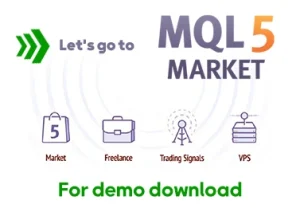Through the Looking Glass:
How Time Frames Shape Your Forex Transactions
The ever-shifting landscape of the forex market can be daunting for new traders. One crucial factor that often gets overlooked is the impact of time frame on your trading strategy. Just like looking at a painting from afar versus close up, the time frame you choose presents a different view of price movement, impacting the types of trades you make and the tools you use.
The Time Frame Tango: Strategies in Different Keys
Your trading strategy is like your dance partner – it needs to complement your chosen time frame. Here’s a breakdown of how different time frames influence strategic choices:
- Short-Term (Scalping, Day Trading): Lower time frames (minutes to hours) compress the market action, highlighting fleeting price movements. Technical indicators like moving averages and stochastics become your weapons of choice, demanding quick reactions and precise timing. The fast pace necessitates constant monitoring and a high tolerance for risk, as profits tend to be smaller and come from multiple trades throughout the day.
- Medium-Term (Swing Trading): Daily and weekly charts offer a broader view, allowing you to identify trends and potential entry/exit points within them. This time frame provides more breathing room for analysis using fundamental factors alongside technical indicators. Swing trading offers a balance between active management and capitalizing on trends, with positions held for days to weeks.
- Long-Term (Position Trading): Monthly and yearly charts paint the big picture, revealing long-term trends shaped by economic fundamentals, central bank policy, and geopolitical events. Patience is paramount in this strategic dance, with positions held for weeks, months, or even years. This style is suited for those comfortable with a hands-off approach, profiting from major shifts in the market rather than short-term volatility.
The Transaction Two-Step: Costs and Considerations
- Transaction Costs: Shorter time frames generally lead to more frequent transactions, which means spreads (the difference between the bid and ask price) eat into your profits. Be mindful of these costs when planning your trades.
- Volatility & Risk Management: Short-term charts tend to be more volatile, meaning stop-loss orders become even more crucial to limit potential losses. Long-term charts tend to be smoother, allowing for wider stops.
The Wisdom of the Whales: Big Traders on Time Frames
- Legendary trader George Soros is known for his long-term approach, investing in major economic trends.
- Short term guru Al Brooks emphasizes the importance of price and psychology in scalping strategies.
- Richard Dennis emphasizes the importance of aligning the time frame with the strategy. It believes that understanding the larger trend (over longer timeframes) is critical to profiting from short-term market movements.
Beyond the Basics: Combining Time Frames for a Well-Rounded Approach
Many experienced traders use a multi-timeframe analysis approach. This involves looking at the same currency pair across different time horizons. For instance, a trader might use a weekly chart to identify the overall trend, a daily chart to refine their entry/exit points, and a lower time frame chart to pinpoint precise timing for their trade.
The Final Word: Time is on Your Side (if You Use it Wisely)
Choosing the right time frame isn’t a one-size-fits-all proposition. Experiment with different time horizons and backtest your strategies to see what works for you. Consider your personality, risk tolerance, and available time when making this decision. Remember, even big traders acknowledge the importance of this symbiotic relationship between time frame and strategy. By mastering this concept, you’ll be well on your way to navigating the forex market with greater confidence and a more strategic approach.
Disclaimer: This article is for informational purposes only and should not be considered financial advice. Please consult with a qualified financial advisor before making any investment decisions.
Happy trading
may the pips be ever in your favor!










